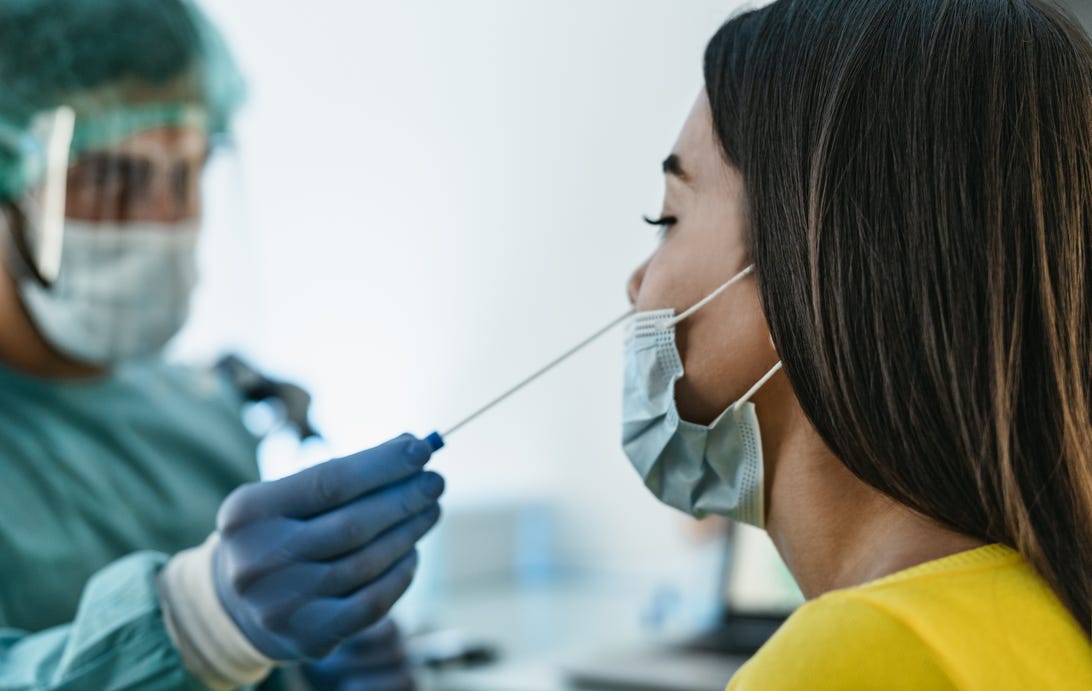What Happens If the US Runs Out of COVID Funds? – CNET

Andriy Onufriyenko/Getty Images
For the most up-to-date news and information about the coronavirus pandemic, visit the WHO and CDC websites.
The US is running out of COVID-19 money. Funding for free COVID-19 tests, free vaccines regardless of insurance status, and shipments of treatments for people most at risk of severe disease is on the line after Congress failed to agree on a budget that included funds for pandemic preparedness. Without more funding, according to the White House, there will be big consequences.
Monoclonal antibody treatments will run out as soon as May, and the government won’t be able to order any more doses of Paxlovid, a highly effective COVID-19 treatment against omicron. The US Department of Health and Human Services already announced its program for uninsured Americans has expired, which means providers are no longer able to submit claims for patients without private insurance, Medicare or Medicaid to cover COVID-19 testing and treatments.
By April 5, the uninsured program will also stop accepting claims for COVID-19 vaccines, despite the country’s promise that everyone — regardless of insurance or immigration status — can get a free COVID-19 vaccine or booster shot without worrying about hidden costs.
“We have the tools that work and we know that if you have to pay to use those tools, it is a barrier,” Amber D’Souza, professor of epidemiology at Johns Hopkins Bloomberg School of Public Health said Thursday at a COVID-19 media briefing. “When I walk into the grocery store and someone sneezes or coughs in the aisle next to me, I don’t want to worry that they didn’t have the $10 to spend on an extra test,” she said.
Despite the country’s broad loosening of COVID-19 public restrictions, the pandemic is not over. Experts are currently watching a new type of “stealth omicron” (BA.2), which doesn’t appear to cause more disease severity than the original. But given its bump in contagiousness, it’s causing a small increase in cases in some areas, including New York City. Fortunately, US COVID-19 hospitalization rates and deaths continue to decrease, as do COVID-19 average weekly deaths worldwide.
The White House continues to press for more funding. Republicans initially pushed back against a pandemic relief package, leading to bipartisan efforts to find a new plan. After failing to agree on a pandemic aid package, lawmakers stripped it from a spending bill altogether.
But without action from Congress, the White House COVID-19 response team warned this week that Americans will start to feel the effects.
Here’s how that could affect COVID-19 health care for you.

Aitor Diago/Getty Images
If I need a fourth shot or extra booster, will it still be free?
The US Food and Drug Administration has a meeting scheduled on April 6 for its independent advisers to discuss the need for future COVID-19 boosters, and the possibility for a new vaccine to target future variants. This week, the FDA authorized a second booster for adults 50 and older as well as some immunocompromised people.
At a media briefing last week, Zients said there is enough government supply of vaccines to get eligible immunocompromised people a fourth shot, and also enough to secure fourth doses for other vulnerable populations, including seniors.
However, should the public health agencies call for fourth doses for all adults, or even “if things change and there’s a need for a new vaccine,” he says, the US government won’t be able to fulfill the need.
Can I still get a COVID vaccine or booster if I don’t have health insurance?
The Uninsured Americans program will stop accepting claims on April 5 from health care providers for people without health insurance when they go in to get a shot. Presumably, you should have up until then to get a shot without any issues.
If you need a first shot, the second dose or have been waiting to get your booster, you can still find a vaccine site and see which shots are available near you by texting your ZIP code to 438829 or by visiting vaccines.gov.
After April 5, things are currently a little less clear. While the COVID-19 vaccines themselves may still be free, people without health insurance may be responsible for the cost of actually having them administered, according to an NPR report.
Should Congress not decide on a new COVID funding budget, the impact may vary by state and how they choose to use their own funding.
Will we still get free vaccines for children?
Zients also said that when a COVID-19 vaccine is available to children under age 5, the US will have the supply needed to vaccinate that age group.

Alessandro Biascioli/Getty Images
What about COVID tests and treatments if I don’t have insurance?
The same government program, citing “lack of sufficient funds,” stopped accepting claims for uninsured Americans for COVID tests and treatments on March 22. This means health care providers will either be forced to “absorb the cost or turn away people who are uninsured,” the White House said.
If you don’t have Medicaid, Medicare or private health insurance and need a COVID-19 test or treatment right now, call wherever you’d go for the test or treatment to see how, or if, it’ll affect you.
Quest Diagnostics, a large testing provider, may now charge $125 for a PCR test without insurance, ABC News reported. Prices from other testing services may vary, and ABC reported that companies such as Walgreens are waiting on more guidance from the White House.
The Health Resources and Services Administrations also pointed to other resources for uninsured Americans, including Medicaid enrollment (which can take a long time to process and probably won’t work as an immediate solution) and the free-through-mail at-home COVID-19 test program.
What else will happen if funds run dry?
In addition to affecting future supplies of monoclonal antibodies and pill treatments for COVID-19, the supply of AstraZeneca’s prevention drug for immunocompromised people may also dwindle, HHS Secretary Xavier Becerra said at a White House COVID-19 briefing. The White House says it also needs more money to fund research on pan-coronavirus vaccines, which have the potential to be more effective at targeting future variants.
Other countries may also be affected by a lack of US COVID-19 funds. Without more funding, Zients said, the US will be unable to turn the vaccines it donated (1.2 billion doses) into vaccinations through partnerships and programs including USAID. Only 14.5% of people in low-income countries have received at least one dose of a COVID-19 vaccine, according to Our World in Data.
Dr. Anna Durbin, a professor in the Department of International Health at Johns Hopkins Bloomberg School of Public Health, suggested at a media briefing this week that the concern in lack of funding extends beyond the current COVID-19 wave, and into future pandemics of different viruses. Will we be prepared?
“We’ve had previous examples where we were concerned about pandemics — whether it be from another H1N1, another avian influenza virus, SARS-CoV-1,” she said. “And we realize we didn’t put the money into prevention that we could’ve at the time.”
When COVID-19 came around, the US was not prepared, she said.
“Now is the time to really cement that funding and think about the future and prevention,” Durbin said. “Not just of COVID, but of future pandemics that are surely going to come.”
Get the CNET Now newsletter
Spice up your small talk with the latest tech news, products and reviews. Delivered on weekdays.
The information contained in this article is for educational and informational purposes only and is not intended as health or medical advice. Always consult a physician or other qualified health provider regarding any questions you may have about a medical condition or health objectives.







